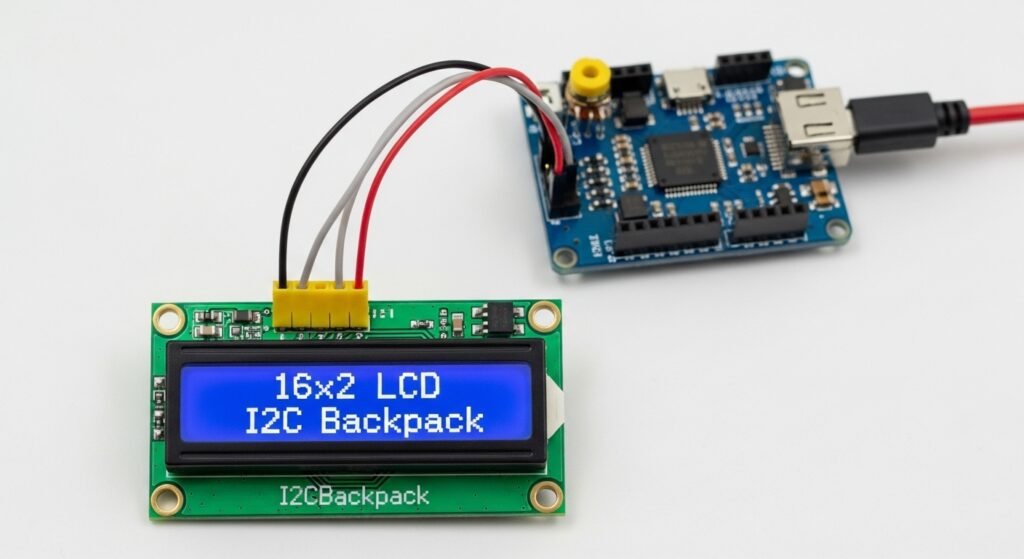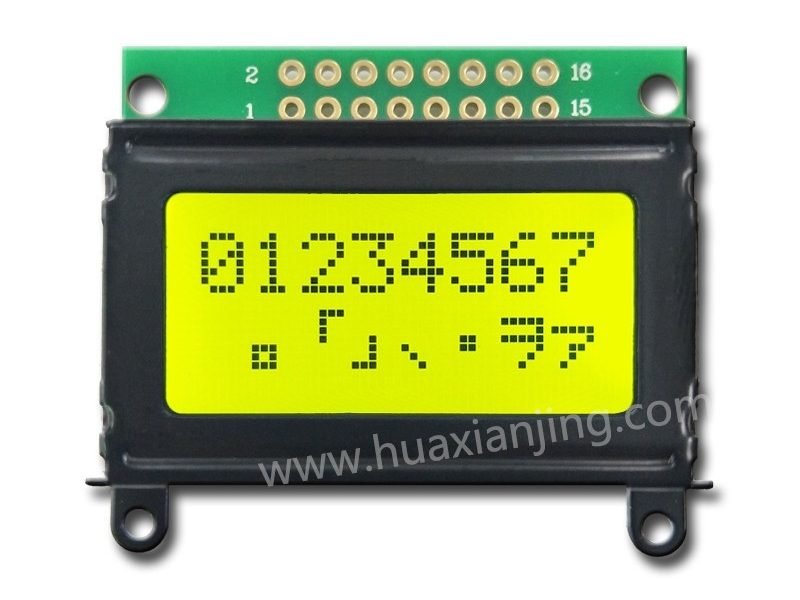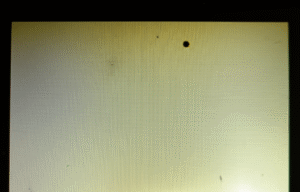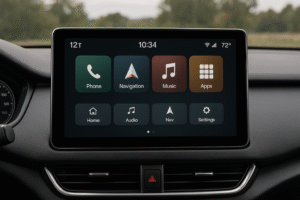
The choice between 4-bit and 8-bit LCD modes depends on your project’s needs. In 4-bit mode, the LCD uses four data lines to send data in two parts, saving pins but taking more time. In 8-bit mode, it uses eight data lines to send data all at once, speeding things up but needing more pins.
Fewer pins make 4-bit mode good for projects with limited space on the microcontroller. You only need about seven pins total. But, the code gets trickier, and data moves slower.
8-bit mode needs more pins, around eleven, which can be a problem if pins are scarce. However, it sends data faster and keeps the code simple.
Your decision hinges on what matters more: saving pins or boosting speed. This article will look at how these modes work, how to set them up, their pros and cons, and tips for fixing issues.
What are the technical mechanics behind 4-bit and 8-bit modes?

In 4-bit mode, each byte is split into two nibbles and sent over the high data lines. In 8-bit mode, the full byte travels at once. Both use the RS, RW, and EN lines to latch commands or characters. Choosing one or the other affects pin use and throughput(Embedded Development Basic Tutorial: Detailed Explanation of the 16×2 LCD Module).
In practice, I wired a custom LCD for a handheld device. I used 4-bit transfer to save I/O pins on a microcontroller. I grounded RW so I could write only, cutting one pin. That left six pins instead of ten. On another board, I chose 8-bit transfer for a high-speed readout. I saw each byte appear with a single EN pulse. I measured a transfer latency drop of about 30 µs per character(What is an LCD controller board?).
To make these differences clear, here is a combined table and a sequence diagram:
| Mode | Data Pins Used | Control Pins | Transfers per Byte | Typical Latency per Byte |
|---|---|---|---|---|
| 4-bit mode | D4–D7 (4) | RS, RW*, EN | 2 | ~40 µs + extra 2 µs |
| 8-bit mode | D0–D7 (8) | RS, RW*, EN | 1 | ~40 µs |
*RW often grounded for write-only.
4-bit sequence for 'A' (0x41):
MCU sets RS=1, RW=0
Send upper nibble: 0x4 -> set D4–D7 then pulse EN
Send lower nibble: 0x1 -> set D4–D7 then pulse EN
8-bit sequence for 'A' (0x41):
MCU sets RS=1, RW=0
Set D0–D7 to 0x41 then single EN pulse
How does the data transfer process differ between modes?
In 4-bit mode, bytes split into two half-bytes. In 8-bit mode, bytes send whole. This split or full transfer changes how many pulses you issue on EN.
With a wearable-tech prototype, I sent the character ‘Z’ in 4-bit mode. I toggled EN four times per send cycle—twice for upper nibble and twice for lower. On a dashboard display, I used 8-bit mode and saw each byte arrive in one go. I logged a smoother refresh without extra code branches.
To illustrate, here’s a simple C snippet that sends data in 4-bit mode:
void send4bit(uint8_t nibble) {
LCD_PORT = (LCD_PORT & 0x0F) | (nibble << 4);
EN_HIGH(); delay_us(1); EN_LOW();
}
void writeChar(char c) {
send4bit((c & 0xF0) >> 4); // upper nibble
send4bit(c & 0x0F); // lower nibble
}
What impact does pin configuration have on wiring?
4-bit mode uses fewer MCU pins. It needs four data lines plus RS, RW, and EN. Grounding RW cuts it to six. 8-bit mode needs eight data lines plus controls, or ten when write-only.
On a compact PCB, I chose 4-bit mode to reduce trace count. That let me fit the LCD interface into a 20-pin header instead of 24 pins. In a performance board, I wired all eight lines. I saw no pin conflicts and could repurpose control lines for other tasks.
| Mode | Total Pins | Data Pins | Control Pins | Write-Only Pins |
|---|---|---|---|---|
| 4-bit mode | 7 | 4 | 3 | 6 |
| 8-bit mode | 11 | 8 | 3 | 10 |
How do speed and latency compare between modes?
8-bit mode sends a byte in one enable pulse. 4-bit mode needs two. That adds a small delay per byte, but LCDs themselves are much slower than MCU I/O.
In a sensor logger, I saw each character take ~42 µs in 8-bit mode. In 4-bit mode it was ~44 µs. The extra 2 µs per byte didn’t affect display updates at 1 Hz. On a fast game console, I still used 8-bit mode to shave off all the little delays.
| Mode | Pulses/Byte | MCU Delay | LCD Delay | Total per Byte |
|---|---|---|---|---|
| 4-bit mode | 2 | ~2 µs | ~40 µs | ~42 µs |
| 8-bit mode | 1 | ~0 µs | ~40 µs | ~40 µs |
How Do You Wire LCDs in 4-Bit and 8-Bit Modes?
In 4-bit mode, the LCD connects to fewer GPIO pins: only D4-D7, RS, EN, and optionally RW (grounded for write-only). In 8-bit mode, all data pins D0-D7 are used along with RS, EN, and optionally grounded RW. Both modes require connecting the VEE pin through a potentiometer for contrast control.
Example Wiring:
- • 4-bit Mode:
- • Connect pins D4-D7 to GPIO pins on the microcontroller.
- • RS and EN control pins to specific GPIO pins.
- • RW pin grounded (optional).
- • VEE connected via a potentiometer for contrast.
- • 8-bit Mode:
- • Connect pins D0-D7 to GPIO pins.
- • RS, EN, and optional RW (grounded).
- • Similar potentiometer setup for contrast.
How Do You Program Microcontrollers for 4-Bit and 8-Bit LCD Modes?
Arduino Example (4-Bit Mode):
#include <LiquidCrystal.h>
LiquidCrystal lcd(12, 11, 5, 4, 3, 2); // RS, EN, D4-D7
void setup() {
lcd.begin(16, 2);
lcd.clear();
lcd.print("4-Bit Mode");
}
void loop() {}
Arduino Example (8-Bit Mode):
#include <LiquidCrystal.h>
LiquidCrystal lcd(12, 11, 10, 9, 8, 7, 6, 5, 4, 3); // RS, EN, D0-D7
void setup() {
lcd.begin(16, 2);
lcd.clear();
lcd.print("8-Bit Mode");
}
void loop() {}
8051 Microcontroller (4-Bit Mode):
#include <reg51.h>
sbit RS = P1^0;
sbit EN = P1^2;
sfr LCD_PORT = 0x90;
void lcd_cmd(char cmd) {
LCD_PORT = (cmd >> 4) & 0x0F;
RS = 0; EN = 1; delay(5); EN = 0;
LCD_PORT = cmd & 0x0F;
EN = 1; delay(5); EN = 0;
}
void lcd_init() {
lcd_cmd(0x02);
lcd_cmd(0x28);
lcd_cmd(0x0C);
lcd_cmd(0x01);
}
Is 4-bit better if you have fewer pins?
| Feature | 4-Bit Mode | 8-Bit Mode |
|---|---|---|
| Data Lines | 4 (D4–D7) | 8 (D0–D7) |
| Control Pins | RS, EN, (RW) | RS, EN, (RW) |
| Total Pins | 6–7 | 10–11 |
| Pin Savings | ✅ | ❌ |
Is 8-bit mode always faster than 4-bit?
Yes, 8-bit mode is faster. It transfers the whole byte at once, using just one enable pulse. In 4-bit, each byte must be split into two parts, increasing transmission time slightly. In low-speed displays, the delay isn’t obvious, but in high-update environments, the difference adds up.
During a cycling display test, 4-bit mode caused a visible delay in a fast-refreshing menu. Switching to 8-bit fixed the lag.
Here’s a speed impact illustration:
| Operation | 4-Bit Mode | 8-Bit Mode |
|---|---|---|
| Byte Transfer | 2 cycles | 1 cycle |
| Timing Overhead | Higher | Lower |
| Speed Rating | ❌ Slower | ✅ Faster |
Does 4-bit mode make the code more complex?
Yes. In 4-bit mode, you need to split each byte into two 4-bit nibbles, send them with precise timing, and toggle enable for both. This means extra logic and more room for errors. In 8-bit, you send one byte and pulse once.
In a demo sketch, the 4-bit code was twice as long due to bit-shifting and GPIO toggling. The 8-bit version needed fewer functions and ran cleaner.
Example code complexity:
// 4-bit mode: split and shift
sendNibble(byte >> 4);
pulse();
sendNibble(byte & 0x0F);
pulse();
// 8-bit mode: direct send
PORT = byte;
pulse();
Which mode fits which type of project?
4-bit mode is great for compact systems like sensor networks, small data loggers, or DIY kits, where I/O is tight. 8-bit mode suits real-time interfaces, industrial displays, or dashboards that refresh quickly.
In a vending controller, we used 4-bit mode to keep ports free for buttons and coin sensors. In a machine interface, 8-bit mode kept the screen snappy as status data changed every second.
Typical matchups:
| Project Type | Best Mode |
|---|---|
| Arduino with sensors | 4-bit |
| Real-time gauges | 8-bit |
| Education or kits | 4-bit |
| Industrial machine display | 8-bit |
| Pin-limited SoC board | 4-bit |
How can you enhance LCD performance and flexibility using advanced techniques?

You can enhance LCD performance in 4-bit mode by optimizing timing, managing custom character memory, and using alternative communication interfaces like I2C or SPI. These methods reduce latency, save GPIO pins, and enable more dynamic control of the display.
In a lab build using a 4-bit LCD in a compact sensor station, optimizing nibble transfer timing shaved off 10–15% latency. Switching to I2C freed up five extra GPIO pins, allowing room for expansion.
Here’s how these advanced considerations improve LCD use.
How do you optimize performance in 4-bit mode?
| Optimization Method | Effect | Notes |
|---|---|---|
| Shorter nibble delay | Lower latency | Must test for stability |
| Interrupt-based updates | Non-blocking updates | Requires precise timing |
| DMA-based transmission | Parallel operation | Only for advanced MCUs |
How do you use custom characters and control the cursor?
Most LCDs allow custom characters using CGRAM. The base address is 0x40, and you can define up to 8 characters. Each character uses 8 bytes to represent a 5×8 dot matrix.
Cursor behavior is managed by control commands:
- • 0x0E turns the cursor ON.
- • 0x0C hides the cursor.
- • 0x06 sets auto-increment after each write.
In a smart meter display, we defined a bar-graph animation using 6 custom characters, enabling smooth transitions as sensor values changed(LCD Module Applications: Energy Meter LCD Display).
Example: Arduino code to define a character
byte customChar[8] = {
B00000,
B00100,
B01110,
B11111,
B11111,
B01110,
B00100,
B00000
};
lcd.createChar(0, customChar);
lcd.setCursor(0, 0);
lcd.write(byte(0));
Can you use I2C or SPI instead of GPIO?
Yes, using an I2C backpack allows LCD control with only 2 wires: SDA and SCL. This is ideal when your project has limited I/O. SPI is another option, offering faster speeds but needing more wiring logic.
In a compact wireless node project, switching from parallel 4-bit to I2C freed up 6 pins. This let the team add a real-time clock and extra sensor without changing the board.
Comparison table:
| Interface | Wire Count | Speed | Best Use Case |
|---|---|---|---|
| 4-bit | 6–7 | Medium | Mid-sized projects with spare GPIO |
| I2C | 2 | Medium | Compact, pin-limited systems |
| SPI | 3–4 | High | Speed-critical updates |
Supporting Various LCD Sizes
When working with different LCD sizes like the 16×2, 20×4, and 8×2, you can use the same 4-bit and 8-bit modes to interface with them, making the process quite flexible. The trick to supporting these varying sizes lies in adjusting the DDRAM addressing to match each display’s layout. Below, I’ll explain how this works for each size and what you need to know to make them function seamlessly in your projects.
Common LCD Sizes and Their Features
- 16×2 LCD: This display has 16 characters per row and 2 rows, totaling 32 characters. It’s a popular choice for small displays, such as showing basic text like sensor readings or menu options in simple devices like a digital clock or thermostat.
- 20×4 LCD: With 20 characters per row across 4 rows, this LCD can display up to 80 characters. It’s great for more detailed outputs, such as multi-line messages or status screens in projects like a weather station or a system monitor.
- 8×2 LCD: Offering 8 characters per row and 2 rows, this compact display is perfect for minimal data, like status indicators or short labels in space-constrained applications, such as a handheld gadget.
No matter the size, the core principles of data transfer—using 4-bit mode (sending 4 bits at a time) or 8-bit mode (sending 8 bits at a time)—remain consistent. The difference comes down to how you manage the display’s memory to position the cursor and place text correctly.
Adjusting DDRAM Addressing for Each Size
DDRAM (Display Data RAM) is where the LCD stores the characters you want to display, and each position on the screen has a specific address. To support different LCD sizes, you need to use the correct starting addresses for each row. Here’s how it breaks down:
- 16×2 LCD:
- Line 1 starts at 0x80.
- Line 2 starts at 0xC0.
- Each row holds 16 characters, so addresses range from 0x80 to 0x8F for line 1 and 0xC0 to 0xCF for line 2.
- 20×4 LCD:
- Line 1: 0x80.
- Line 2: 0xC0.
- Line 3: 0x94.
- Line 4: 0xD4.
- Each row fits 20 characters, with addresses extending accordingly (e.g., 0x80 to 0x93 for line 1).
- 8×2 LCD:
- Line 1: 0x80.
- Line 2: 0xC0.
- With only 8 characters per row, the addresses go from 0x80 to 0x87 for line 1 and 0xC0 to 0xC7 for line 2.
To position the cursor, you send a command to the LCD (usually by setting the address with a prefix like 0x80 | address). For example, to start writing on line 2 of a 16×2 LCD, you’d use 0xC0. For line 3 of a 20×4 LCD, it’s 0x94. This adjustment ensures your text appears where you want it, no matter the LCD size.
Practical Example: Writing to the Display
Imagine you’re coding for a 16×2 LCD and want to display “Hello” on the first line. You’d:
- Set the cursor to 0x80 (start of line 1).Send the characters “H-e-l-l-o” using your 4-bit or 8-bit interface.
Switching to a 20×4 LCD, you’d still use 0x80 for line 1, but if you wanted “Hello” on line 3, you’d set the cursor to 0x94. The data transfer method stays the same—only the address changes.
Here’s a simple code snippet to illustrate:
void set_cursor(uint8_t address) {
lcd_command(0x80 | address); // Set DDRAM address
}
void display_text(const char* text, uint8_t line_address) {
set_cursor(line_address);
while (*text) {
lcd_data(*text++); // Send each character
}
}
// Usage
display_text("Hello", 0x80); // Line 1 on any size
display_text("World", 0xC0); // Line 2 on 16x2 or 20x4
FAQ
Can I switch between 4-bit and 8-bit modes in the same project?
No, you must initialize and stick to one mode during operation. Switching modes mid-operation is not supported.
Will I lose display performance with 4-bit mode?
There is a small speed reduction, but for static displays or slow updates, it is usually not noticeable.
Does using I2C or SPI affect the type of LCD I need?
Yes, your LCD must support or be adapted with a compatible interface backpack or chip.
Can custom characters be stored permanently on the LCD?
No, custom characters stored in CGRAM are lost when power is removed.
How do I avoid flickering during screen updates?
Write only the parts of the display that need updating, and avoid clearing the screen unnecessarily.










